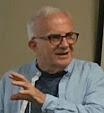
The topic was extremism and religion. It was a global interfaith conversation. Below are the questions I was asked to address, and my responses.
(1) What has been considered the moderate
or Middle Way in your tradition?
Christian practice
has drawn
inspiration from two distinct and sometimes competitive modes of self-understanding. One might be called
the “religion about Jesus” and the other, the “religion of Jesus”.
The religion about Jesus believes that Jesus Christ
is the lens through which we gain a glimpse
into divine reality; he is the mirror in which to see
our truest selves. The God of the
Universe is revealed in a displaced
child who sleeps in a manger and flees imperial violence. The Prince of Peace rides a donkey and wears a crown of thorns. The hand that shaped the universe breaks bread
with friends and enemies alike, washes the feet of others and is nailed to a wooden cross. The death itself is
salvific and reveals the length to which the Holy One is willing to go on
behalf of humankind.
The religion of Jesus is the faith that shaped his
life, the faith he espoused and taught. It was
formed and molded by the beliefs and
practices of ancient Israel. The Shema (love for God with all one’s
being) was for him the greatest
commandment, and the Leviticus principle
of love for neighbor was “like unto it”. His life was formed within a
community of people whose backs were against
the wall. He demonstrated a profound ability to look beyond the stereotypes and roles of a polarized society and to
address the deepest longings in
the human heart. He was
a realist who taught an ethic of
prudent nonviolence. Although he
believed that human beings are, first of
all, spiritual
beings, he understood how
money, power, health and relationships
affect our souls’ development.
Jesus taught that love
is the primary spiritual energy. The self is
most fully realized when it behaves unselfishly.
He called for generosity toward others, and “repentance” from all that is
false and separates us from God and
each other. He counseled a turning toward
that which liberates us to live with
integrity in the present and in harmony with others.
(2) Why and how can practice of these traditions illumine and bring balance to some aspects of faith that are now unfairly weighted by ignorance and extremist views?
In both the religion about Jesus and the religion of Jesus, there is a profound reversal of common assumptions about wealth, power
and happiness. The Holy One is sought and served in
the “Other”. Fulfillment comes
through sacrifice. Generosity is more satisfying than
self-aggrandizement. Stewardship trumps acquisition.
Enemies are engaged, forgiven
and loved, not hated or destroyed. By implication, Christian spiritual
practice replaces ignorance with ever-expanding appreciation. Extremism is
challenged by deep compassion. As we try to see ourselves, others, and all of
creation through “God’s eyes” we grow into to a life of wonder, celebration and
compassion.
(3)
How can this balance contribute
to openness in dialogue, understanding, respect, harmony, compassion and peace
among all people of the world?
The most important step
we can take is to develop loving hearts and a cherishing attitude toward all creation. The first act of love is to see — to see beyond external qualifiers into the intrinsic loveliness
and uniqueness of other persons. The second act of love is to understand — to try to fathom the depths from
which the other emerges. The third act of love is to cherish — to value the person as he or
she really is, and to seek the best for that
person even if it is costly for
oneself.
Opportunities need to
be multiplied where people of differing backgrounds and values come together safely to
see, understand and cherish one another. Occasions for intentional
cooperation and mutual learning must be multiplied and broadly inviting. These can be as
local as neighborhood gatherings,
gardening or cooking together, book studies or Habitat housing projects.
They can be as global as interfaith journeys, pilgrimages or work projects, or even web-based
interfaith classes. As much as possible, such events need to be free of distinctions
based on status, wealth, power, privilege, or political ideology.
This was a presentation to "A Gathering of Hearts - Illuminating Compassion" with His Holiness the 14th Dalai Lama in San Francisco. I included an abbreviated version in my book, Faith In a Minor Key.












